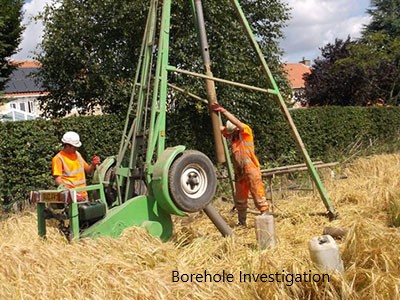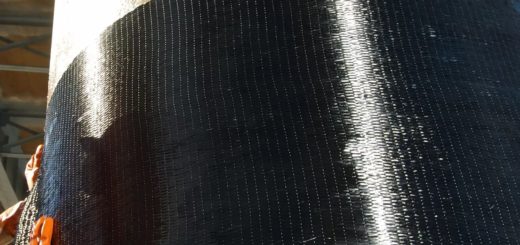Borehole Investigation | Important facts to be Known
Borehole investigation is a process of drilling, logging, and sampling a borehole in order to gather geological and environmental data for analysis and interpretation. This data is used for a variety of applications, including geotechnical engineering, environmental engineering, and hydrogeology. In this article, we will explore the process of borehole investigation, its applications, and the advancements that have been made in recent years.
Borehole investigation is a crucial process for understanding the subsurface conditions of a site. It involves drilling a borehole and collecting data on the geology and hydrogeology of the area. This data is then analyzed to determine the properties of the subsurface and its suitability for various applications. There are several types of borehole investigation, each with its own unique purpose and methodology.
Some of the important aspects discussed this article are
- Definition of Borehole Investigation
- Importance of Borehole Investigation
- Types of Borehole Investigation
- Preparation for Borehole Investigation
- Drilling the Borehole
- Logging and Sampling
- Data Collection and Management
- Log Analysis
- Interpretation of Results
- Geotechnical Engineering
- Environmental Engineering
- Hydrogeology
- Technology and Innovation
- Robotics and Automation
- Summary of Key Points
- Importance of Borehole Investigation in the Future
Definition of Borehole Investigation
Borehole investigation is the process of drilling a hole in the ground and collecting data on the subsurface conditions of the area. This data is used to determine the properties of the soil, rock, and water in the area, as well as any potential hazards or risks that may exist.
Importance of Borehole Investigation
Borehole investigation is important for a variety of reasons. It allows us to understand the geology and hydrogeology of an area, which is critical for a range of applications, including site selection, foundation design, and environmental assessments. Without this data, we would have limited knowledge of the subsurface conditions, which could result in costly errors and safety hazards.
Types of Borehole Investigation
There are several types of borehole investigation, each with its own unique purpose and methodology. These include geotechnical investigations, environmental investigations, and hydrogeological investigations.
Process of Borehole Investigation
The process of borehole investigation typically involves several steps, including preparation, drilling, and logging and sampling.
Preparation for Borehole Investigation
Before drilling a borehole, it is important to conduct a site investigation to gather information about the surface conditions of the area. This information is used to select the appropriate drilling equipment and techniques for the job. It is also used to identify any potential hazards or risks that may exist, such as underground utilities or contaminated soil.
Drilling the Borehole
Once the site investigation is complete, the borehole can be drilled. This process typically involves using a drilling rig to drill a hole in the ground, with the size and depth of the hole depending on the purpose of the investigation. During drilling, water or drilling mud is used to lubricate the drill bit and remove cuttings from the hole.
Logging and Sampling
After the borehole is drilled, it is logged and sampled to gather data on the subsurface conditions. Logging involves measuring and recording the aperture and orientation of the borehole, as well as the properties of the soil, rock, and water in the area. This information is used to create a detailed picture of the subsurface conditions and to identify any potential hazards or risks that may exist. Sampling involves taking physical samples of the soil and water in the area, which are then analyzed in a laboratory to determine their properties and composition.
Interpretation and Analysis of Borehole Data
Once the borehole data is collected, it is analyzed and interpreted to determine the properties of the subsurface and its suitability for various applications.
Data Collection and Management
Data collection and management is an important aspect of borehole investigation. It involves organizing and managing the data collected from the borehole, including logging data, sampling data, and laboratory analysis data. This data is then used to create a detailed picture of the subsurface conditions and to identify any potential hazards or risks that may exist.
Log Analysis
Log analysis is a process of interpreting the data collected from the borehole logs. This involves identifying patterns and trends in the data, as well as any anomalies or outliers. Log analysis is used to determine the properties of the subsurface, including soil and rock types, water content, and the presence of any potential hazards or risks.
Interpretation of Results
Once the borehole data is analyzed and interpreted, the results are used to determine the suitability of the site for various applications. This may include site selection for construction projects, foundation design, or environmental assessments.
Applications of Borehole Investigation
Borehole investigation is used for a variety of applications, including geotechnical engineering, environmental engineering, and hydrogeology.
Geotechnical Engineering
Borehole investigation is important in geotechnical engineering for foundation design, slope stability analysis, and soil and rock classification. The data collected from the borehole is used to determine the strength and stability of the subsurface, which is critical for the design and construction of structures.
Environmental Engineering
Borehole investigation is also important in environmental engineering for site assessments, remediation design, and monitoring of environmental hazards. The data collected from the borehole is used to identify any potential contamination or hazards in the subsurface, which is critical for protecting human health and the environment.
Hydrogeology
Borehole investigation is important in hydrogeology for groundwater exploration, aquifer testing, and contamination assessments. The data collected from the borehole is used to determine the properties of the subsurface, including the permeability and porosity of the soil and rock, which is critical for understanding the movement and availability of groundwater.
Advancements in Borehole Investigation
Advancements in technology and innovation have led to significant improvements in the process of borehole investigation.
Technology and Innovation
Technological advancements have led to the development of new tools and techniques for borehole investigation, including geophysical methods, remote sensing, and imaging technology. These advancements have improved the accuracy and efficiency of borehole investigation, allowing for more detailed and comprehensive data collection.
Robotics and Automation
Robotics and automation have also played a significant role in advancing the process of borehole investigation. Robotic drilling rigs and automated sampling equipment have improved the safety and efficiency of the drilling process, reducing the risk of human error and increasing the speed of data collection.
Conclusion
In conclusion, borehole investigation is a critical process for understanding the subsurface conditions of a site. It allows us to gather data on the geology and hydrogeology of an area, which is used for a range of applications, including geotechnical engineering, environmental engineering, and hydrogeology. Advancements in technology and innovation have led to significant improvements in the process of borehole investigation, improving the accuracy and efficiency of data collection.
FAQs
- What is a borehole investigation? A borehole investigation is a process of drilling into the ground to collect data on the subsurface conditions of a site. This data is used to determine the properties of the soil, rock, and water in the area, and to identify any potential hazards or risks that may exist.
- Why is borehole investigation important? Borehole investigation is important for understanding the subsurface conditions of a site, which is critical for a range of applications, including construction, environmental assessments, and hydrogeology.
- What are the different types of borehole drilling methods? There are several different types of borehole drilling methods, including rotary drilling, percussion drilling, and auger drilling. The choice of method depends on the specific site conditions and the type of data that needs to be collected.
- How is borehole data analyzed and interpreted? Borehole data is analyzed and interpreted using a range of techniques, including log analysis, data management, and laboratory analysis. The results are used to determine the properties of the subsurface and its suitability for various applications.
- What advancements have been made in borehole investigation technology? Advancements in technology and innovation have led to significant improvements in the process of borehole investigation, including the development of new tools and techniques, robotics and automation, and imaging technology.
The depth of the borehole in the rock shall be at least 3 times the pile diameter beyond the socketing length which may the 1m.




